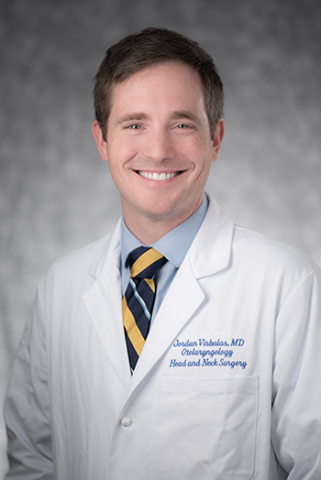
This July, during National Cleft and Craniofacial Awareness and Prevention Month, we want to highlight the ways the team at the Department of Otolaryngology – Head and Neck Surgery at the University of California, San Francisco (UCSF OHNS) is involved in craniofacial care. This month serves to raise awareness and improve understanding of orofacial clefts and other conditions of the head and face.
In the United States each year, around 2,600 babies are born with a cleft palate and around 4,400 babies are born with a cleft lip. Orofacial clefts, other congenital anomalies and accidental injuries to the face affect thousands of infants, children, teens and adults annually.
Several members of the pediatric OHNS team participate in the UCSF Craniofacial Center, including Dylan Chan, MD, JoAnn Czechowicz, MD, Kimberly Luu, MD, Jordan Virbalas, MD, Pamela Chan, PA-C, and Suzanne Petersen, PA-C.
These providers are part of a multidisciplinary team that conducts joint visits for children with craniofacial anomalies. At these visits, a patient may be assessed by a member of our OHNS team, as well as clinicians from plastic surgery, dentistry, orthodontics, oral surgery, audiology, genetics, pediatrics, speech pathology, social work and neurosurgery. After each specialist visits with the patient and the patient's family, the team meets to discusses the assessment and plan together to ensure that appropriate care is delivered in a timely manner and coordinated with any other treatment the patient may require.
Additionally, OHNS providers follow craniofacial patients regularly in individual clinics. Patients with common craniofacial conditions such as cleft palate or ear canal atresia will likely require OHNS care regularly from infancy through their adolescence.
Otolaryngologists play a critical role in the management of children with craniofacial anomalies. Even subtle changes in facial structure can create meaningful functional deficits in a child's hearing, speech, sleep and breathing. There is no other specialty with such broad expertise in the functional elements head and neck anatomy and no clinician better suited to help improve the lives of these children.
"Craniofacial care can provide such dramatic benefits for patients with craniofacial differences," says Dr. Virbalas. "Restoring hearing to a child with ear canal atresia or helping a child with a cleft palate develop intelligible speech removes barriers to entire worlds of interpersonal communication for that child. The opportunity to play a role in that process is among the most fulfilling aspects of my career."
Dr. Virbalas remembers a patient who was born with microtia and ear canal atresia of both ears that could only hear using a tight headband that turns sound into vibration against the bone behind her ear. She was soft spoken and appeared withdrawn. On the day of surgery, staff felt that she was either shy, angry or afraid of the providers. But that all changed after hearing aids were implanted.
"She became a totally different kid. She was LOUD. She was outgoing," says Dr. Virbalas. "This change, not only in the functional hearing of this child, but in her personal growth and happiness, is profoundly rewarding."
According to Dr. Virbalas, the best way to learn about the types of difficulties that children with craniofacial differences overcome is to participate in a multidisciplinary craniofacial clinic. By shadowing any one of the different participating clinicians (and joining in the multidisciplinary discussion that follows), medical students can get a new perspective on these challenges and what treatments are offered.
"Multidisciplinary care of patients is great way to see problems from multiple different perspectives," says Dr. Virbalas. "Working in a collaborative environment like the craniofacial clinic makes me a better otolaryngologist."
To learn more about the UCSF Craniofacial Center at the Benioff Children's Hospital, visit the website.




